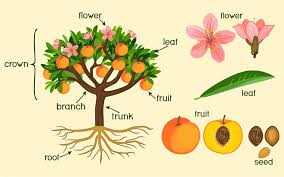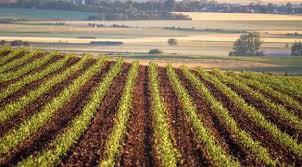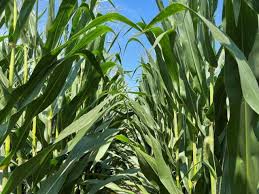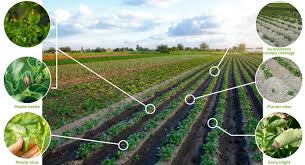Plant productivity is decreasing due to the detrimental effects of various biotic and abiotic yield reduction factors that are majorly environmental in nature.
Therefore, minimising these losses is a major area of concern to ensure food and fiber security under the ever-changing climate. Environmental abiotic stresses, such as drought, extreme temperature, cold, heavy metals, or high salinity, severely impair plant growth and productivity.
In many regions of the world, crop losses due to increasing water shortage will further aggravate the impacts of climate change; the most noticeable is the reduction in yields and yield components of plants.
To properly understand yield and yield components of plants, the morphological characteristics of plants must be studied and known. Plant morphology examines the pattern of development, the process by which structures originate and mature as a plant grows.
While animals produce all the body parts they will ever have from early in their life, plants constantly produce new tissues and structures throughout their life.
Read Also: Feed Lot Fattening of Rams Practice
Plant Morphology and Its Role in Yield Determination

Plant morphology, or phytomorphology, is the study of the physical form and external structures of plants. Plant morphology is useful in the visual identification of plants. It represents a study of the development, form, and structure of plants, and by implication, an attempt to interpret these on the basis of similarity in plants and origin.
When structures in different species are believed to exist and develop as a result of common, inherited genetic pathways, those structures are termed to be homogenous.
For example, the leaves of mango, orange and guava all look very different but share certain basic structures and arrangement of parts.
Secondly, plant morphology observes both the vegetative (somatic) structures of plants, as well as the reproductive structures. The vegetative structures of vascular plants include the shoot system, composed of stems and leaves, as well as the root system.
The reproductive structures are more varied and are usually specific to a particular group of plants, such as flowers and seeds. At the largest scale is the study of plant growth habit the overall architecture of a plant.
A plant morphologist examines the pattern of development, the process by which structures originate and mature as the plant grows.
The way in which new structures develop and mature might be affected in the plant’s life when they begin to be influenced by the environment to which the structures are exposed.
A morphologist studies this process, its causes, and its final result on the yield and yield components of the plant.
Major Yield Components of Selected Crops

One of the metrics used to determine the efficiency of food production is crop yield. Crop yield (also known as agricultural output) refers to both the measure of the yield of a crop per unit area of land and the grain resulting yield, usually expressed as tons per hectare.
As plants grow after germination and within the competitive biotic and abiotic environment, structures and components of the plant emerge and grow. These vegetative structures include the stems, leaves, shoot system, and root system.
Later in the life of the plant, reproductive organs emerge or develop. The performance of these structures and organs, including the canopy size and form, branches, and vines, all will sum up into yields or products of choice.
Depending on the crop and the output of interest, yield components of some selected crops include the followings:
1. Yield Components of Rice
- Average leaf length (cm) : Measures the average size of leaf length per plant.
- Average leaf width (mm) : Represents average leaf breadth.
- Average number of leaves per plant : Reflects plant vigour.
- Germination percentage (%) : Indicates establishment rate.
- Total number of tillers/m² : Shows productive potential.
- Number of days to heading : Time to panicle emergence.
- Number of days to maturity : Harvest readiness indicator.
- Plant height (cm) : Reflects growth performance.
- Weight of 1000 seeds (g) : Seed size and density.
- Grain yield (t/ha) : Total output per hectare.
- Number of effective tillers/m² : Yield contributing tillers.
- Panicle length (cm) : Affects number of grains.
- Total grain per panicle : Grain production potential.
2. Yield Components of Maize
a. Growth components of maize:
i. Plant height (cm) at 4, 8, 12 WAP : Measures vertical growth at various stages.
ii. Number of leaves per plant : Indicator of photosynthetic capacity.
iii. Length and width of leaf (cm) : Leaf surface area.
iv. Leaf area index : Total leaf area per ground area.
b. Yield components of maize:
i. Dry cob weight (t/ha) : Mass of harvested cobs.
ii. Number of cobs per plant : Productivity per stand.
iii. Number of seeds per cob : Seed setting capacity.
iv. Dry grain weight (t/ha) : Final output.
v. Dry stover weight (t/ha) : Residue biomass.
vi. Weight of 100 seeds (g) : Seed size index.
3. Yield Components of Bambara Groundnut
a. Growth components of Bambara groundnut:
i. Days to 50% flowering and maturity : Indicate growth cycle length.
ii. Number of leaves per plant : Reflects vegetative growth.
iii. Canopy width and plant height (cm) : Reflect spatial occupation and height.
iv. Length of tap root (cm) : Indicates rooting depth.
v. Number and length of lateral roots : Reflect nutrient and water uptake potential.
4. Yield components of Bambara groundnut:
- Number of pods and seeds per pod : Reproductive success.
- 100 seed weight (g) : Indicates seed size.
- Dry pod and seed yield (t/ha) : Economic output.
- Shelling percentage (%) : Proportion of seed to pod.
- Total biomass and shoot dry matter (t/ha) : Reflects plant vigour.
- Dry root weight and number of nodules per plant : Nutrient contribution via fixation.
- Dry weight of nodules per hectare (kg/ha) : Soil fertility contribution.
5. Yield Components of Cowpea
- Number of branches/stand : Reflects plant spread.
- Number of pods/stand : Determines reproductive success.
- Pod length (cm) : Indicates pod development.
- Number of seeds per pod : Seed setting.
- 100 seed weight (g) : Seed size.
- Dry grain and pod weight (t/ha) : Marketable yield.
- Shelling percentage and harvest index : Conversion efficiency.
- Dry root weight and biomass (t/ha) : Residue and total growth.
- Shoot dry matter (t/ha) : Vegetative yield.
6. Yield Components of Sunflower
- Plant height and stem diameter (cm) : General vigour.
- Head diameter (cm) : Seed production capacity.
- 1000 seed weight (g) : Seed mass indicator.
- Dry matter and shoot biomass (t/ha) : Total productivity.
- Harvest index and seed yield (g/plant and t/ha) : Efficiency and output.
- Leaf number : Photosynthetic potential.
Read Also: The Systems of Sheep Production
Environmental and Agronomic Factors Limiting Crop Yield

1. Rainfall and Water Availability
Rainfall is the most common form of precipitation. It is the falling of water in droplets on the surface of the Earth from clouds.
The amount and regularity of rainfall vary with location and climate types and affect the dominance of certain types of vegetation as well as crop growth and yield.
2. Light Quality and Duration
Light is a climatic factor essential in the production of chlorophyll and in photosynthesis. It also affects stomatal movement, phototropism, photomorphogenesis, translocation, mineral absorption, and abscission.
Three properties of light affecting plants include light quality, light intensity, and day length (photoperiod).
3. Temperature Extremes
Temperature affects growth processes such as photosynthesis, respiration, transpiration, dormancy breaking, and germination. Most plants survive between 0°C and 50°C, with species-specific optimal ranges. High or low extremes may inhibit enzymatic reactions and physiological development.
4. Air Composition
The air is a mixture of gases in the atmosphere. Oxygen is vital for respiration and energy production, while carbon dioxide is a raw material in photosynthesis. Both gases are critical to plant growth and yield.
5. Relative Humidity (RH)
Relative humidity is the amount of water vapour in the air, expressed as a percentage of the maximum it can hold at a specific temperature. It influences stomatal activity, transpiration, and photosynthesis rates.
6. Wind Influence
Wind aids in pollination, especially for wind-pollinated crops like grasses. It also affects evapotranspiration and can cause mechanical damage when too strong.
7. Soil Nutrient Availability
Nutrient availability must be optimised for crop production. Balanced fertilisation and organic matter management are key to yield improvement.
8. Soil Constraints
These are physical or chemical restrictions to root development and include compacted layers or acidity. Corrective measures involve appropriate fertilisation and use of soil ameliorants.
9. Physiological Limitations
Yield is influenced by the efficiency of photosynthesis, leaf longevity, reproductive success, and assimilate allocation. Stress conditions like drought or heat may disrupt these physiological processes.
10. Plant Pests and Diseases
Pests and diseases significantly lower yields. Regular inspection and the application of integrated pest management (IPM) a combination of biological, chemical, and cultural practices are essential for sustainable control.
Do you have any questions, suggestions, or contributions? If so, please feel free to use the comment box below to share your thoughts. We also encourage you to kindly share this information with others who might benefit from it. Since we can’t reach everyone at once, we truly appreciate your help in spreading the word. Thank you so much for your support and for sharing!

